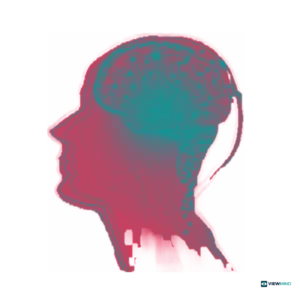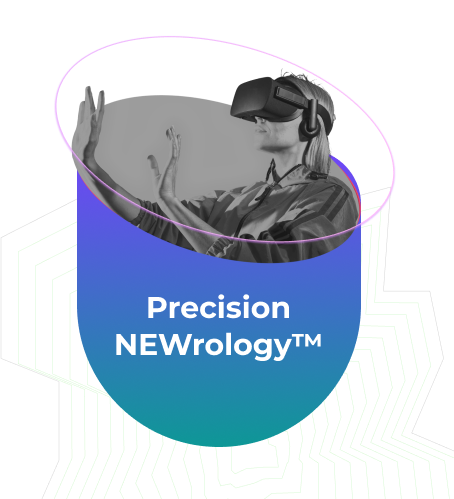
How do we know when mild cognitive impairment (MCI) will become Alzheimer’s?
Cognitive impairment is a multifaceted ailment that has long bedevilled researchers due to the unpredictable nature of its progression. Some individuals with mild cognitive impairment (MCI) later develop Alzheimer’s disease syndrome (ADS), while others remain at the same level of MCI or develop other forms of dementia. Finding a way to identify those whose MCI will convert to Alzheimer’s before they become symptomatic is key to developing early interventions that can lessen the disease’s severity or stop its progression entirely.
Linking eye movement and cognition
At ViewMind, we’ve developed a novel cognitive digital biomarker that tracks eye movement and pupil response to help predict the conversion of mild cognitive impairment (MCI) to Alzheimer’s disease. In a recent longitudinal study, we confirmed our hypothesis that this diagnostic technique could predict conversion to Alzheimer’s with high accuracy. This holds great promise for being able to develop an accessible and affordable cognitive evaluation that can catch Alzheimer’s years or even decades before symptoms develop.
Certain well-defined eye movement patterns have been shown to indicate healthy visual short-term memory, a reflection of a strong connection between eye movement and cognition. Recognizing deviations from such patterns is a key way to locate signs of Alzheimer’s as much as 20 years before symptoms begin to present. Not only can these differences indicate that dementia is present; they can also differentiate Alzheimer’s dementia from other types such as Parkinson’s disease or fronto-temporal dementia.
To design our study, we built on a recent study in Frontiers in Human Neuroscience which found that viewing fixation duration can be affected by memory and processing load, as well a previous study from ViewMind and partner institutions which reported that oculomotor behaviour related to cognitive tasks could serve as a biomarker for Alzheimer’s. We then created a visual exploration exercise to measure impaired cognitive processes among our study participants with MCI by tracking their eye movements.
ViewMind’s longitudinal study
In our three-year longitudinal study (2017–2020), we compared the eye movement of patients with no cognitive impairment to that of those with MCI as the participants performed a visual short-term memory binding (VSTMB) task. We found that specific patterns in eye movement and pupil response among participants with MCI positively corresponded with their likelihood of later converting into ADS.
The study, which assessed 105 participants (63 with MCI and 42 controls), employed our proprietary digital biomarker, an AI application that detects patterns in eye movement associated with various forms of cognitive decline. Participants completed neurocognitive and oculomotor (VSTMB) assessments at baseline followed by annual clinical evaluations to monitor the progression of cognitive decline throughout the three years of the study. The VSTMB task required participants to view objects with different-coloured shapes and frames, and to recall their colors either as individual features or appearing within a unified representation.
In the first experimental condition participants focused on recalling what they saw and whether what they saw appeared in a shape or frame. Our sensitive AI technology was able to conclusively predict which participants demonstrated processing difficulties consistent with cognitive decline due to Alzheimer’s. These results correlated strongly with those from traditional cognitive screening tools such as the Minimental State Examination (MMSE), the INECO Frontal Screening (IFS), and the Addenbrook’s Cognitive Examination Revised (ACE-R).
Of the 63 participants with MCI, researchers predicted that 36 would later develop ADS based on their initial assessments, with the remaining 27 remaining in their current state of MCI or progressing to other forms of dementia (fronto-temporal or Parkinson’s Disease). The results of the study showed 94% accuracy in predictions of conversion to Alzheimer’s based on analysis of the digital biomarker 3 years before symptoms. Of equal if not greater importance is that ViewMind correctly predicted with a 100% accuracy who would not convert to Alzheimer’s syndrome. These patients may develop another dementia such as Frontotemporal dementia, Lewy body dementia or Parkinson’s. The ability to precisely segment a cohort into MCI to AD converters and non converters is of high importance to any pharmaceutical company clinically validating a new drug for Alzheimer’s. Similarly it would be of great value to a neurologist determining who to prescribe the drug to and then to monitor the subsequent impact of a disease modifying therapy on different areas of the brain.
Early detection is difficult but critical
One of the most significant challenges in fighting Alzheimer’s disease is finding a way to diagnose the disease before symptoms develop. Even when symptoms begin to present, they are often indistinguishable from common signs of normal ageing, such as forgetfulness and occasional disorientation.
By the time a person is showing enough possible signs of Alzheimer’s to warrant a diagnostic procedure, the disease is typically already at a very advanced stage. Beta-amyloid and Taub protein formations—two of the key indicators of Alzheimer’s disease—can be present in brain cells for years and even decades before symptoms become detectable. We recognized that so much more could be done for people with Alzheimer’s if the signs could be detected far sooner.
Using the digital biomarker to assess conversion of MCI to Alzheimer’s also presents a possibility for normalizing regular cognitive assessments as a preventive rather than retroactive measure. Our eye-tracking technology can be used widely and at a comparatively low cost, meaning that it could become part of a regular cognitive check-up for everyone, not just individuals experiencing cognitive difficulties.
A proactive approach to turning the Alzheimer’s tide: Pure data
Current diagnostic procedures for Alzheimer’s disease are problematic. Brain imaging through MRI, CT, or PET scans is expensive and must be repeated periodically to find out whether the disease is progressing.
A lumbar puncture (CSF), which tests the levels of tell-tale proteins in the cerebrospinal fluid, is also invasive and risky. Pen-and-paper neurocognitive assessments cannot be considered fully objective because they must be interpreted by an evaluator whose assessment is likely to differ from another’s. Even more problematic, these methods are currently only utilized once the disease has advanced significantly and cognitive damage is likely irreversible.
Our highly sensitive diagnostic technology makes it possible to detect the first signs of Alzheimer’s early in the disease’s development, long before a patient becomes symptomatic. The ViewMind method uses pure data, unmediated by any third party, so there is no risk of subjectivity creeping in when interpreting it. With the rates of Alzheimer’s cases expected to triple by 2050, the promise of a safe, accurate and accessible diagnostic option that could help normalize routine cognitive check-ups is a timely development indeed.
Related Posts

With Digital Health, the Future Is Now
Digital biomarkers: Charting the unknown With Digital Health, the Future Is Now Amid the often dire news circulating this year, several outlets added a bit…

The Race against Long COVID
Apart from the horrifying statistic of more than six million deaths from COVID-19 worldwide, one of the most troubling outcomes of the disease has been…

Why is an earlier diagnosis of Alzheimer’s disease key to flattening the growth curve of rapidly escalating patient populations?
Alzheimer’s disease, the leading cause of dementia, is notoriously difficult to diagnose in its initial stages. This is one reason that numbers of Alzheimer’s cases…


